
There’s a Difference Between Polishing Winches and Greasing Bearings
What a great crew! After a terrible start to our Friday night beer can race, we were forced to tack for clear air in vain. While the crew decided there wasn’t much they could do to help improve the skipper’s starting tactics they thought they could at least make it easier to tack. They offered to help clean and grease the winches. How could we say no? Both Randy Gridley and Tom Woolly have dismantled, cleaned and greased many winches in the past, but unless you do it regularly, pulling the drums off a new set is always a fresh learning experience.
Polishing the outside of the winch is easy, but cleaning the inside is a different animal. Randy helped prepare the list of materials needed, which included winch grease for the heavy bearings, light oil for the pawls and springs, new springs, acetone for cleaning, rags, brush to apply the light coating of grease, paper towels, rags and sunscreen. When disassembling, we took photos and placed each piece down in order of removal. This is where digital photography comes in super-handy.
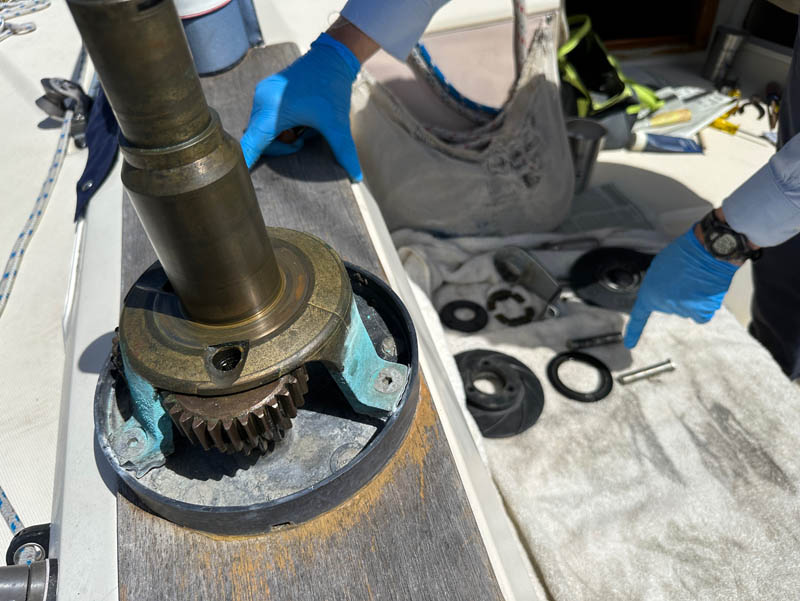
It helps to have a nice day and not be in too much of a rush, since patiently taking photos and laying components out for reassembly is critical to remembering how to put them all back together. Varnish looks like another task for the future.
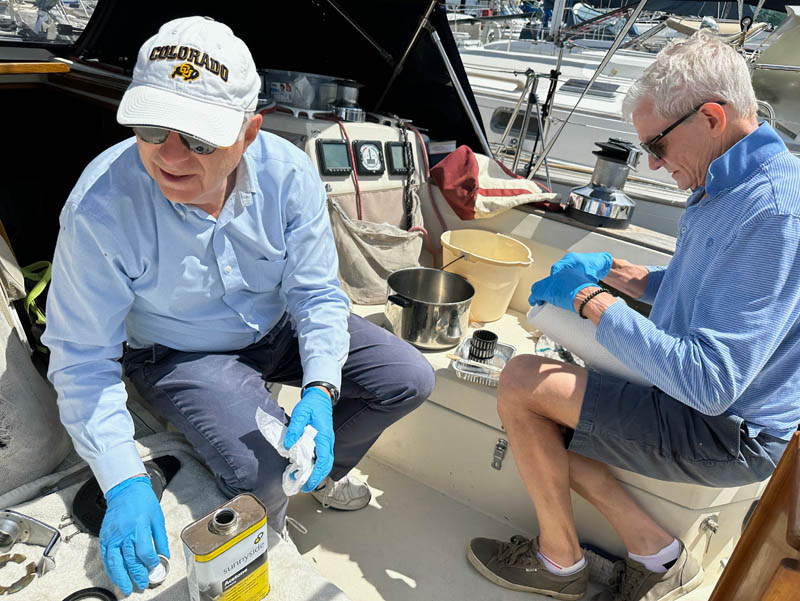
Another hot tip was to do one winch at a time. If you take two completely apart you don’t have one to look at when you’re flummoxed on how to reassemble them. Having an assembled winch to look at when you’re reassembling the first one is a big help.
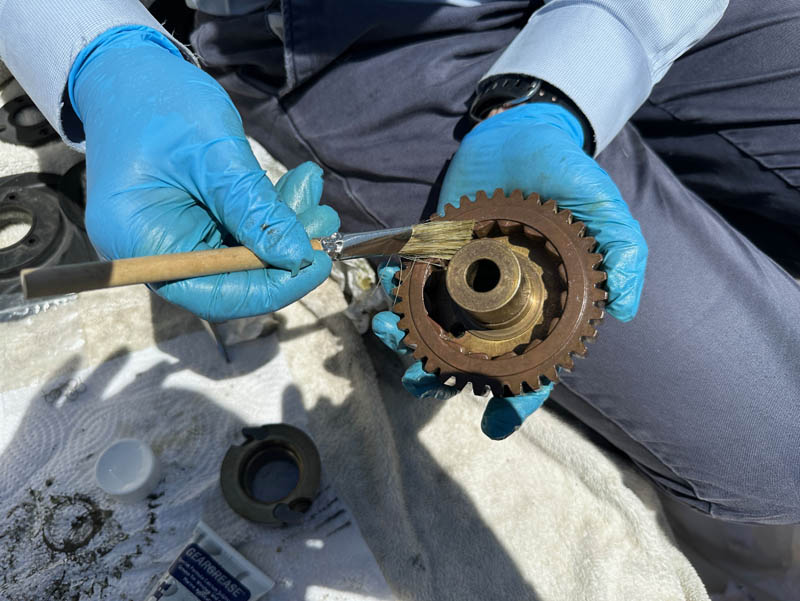
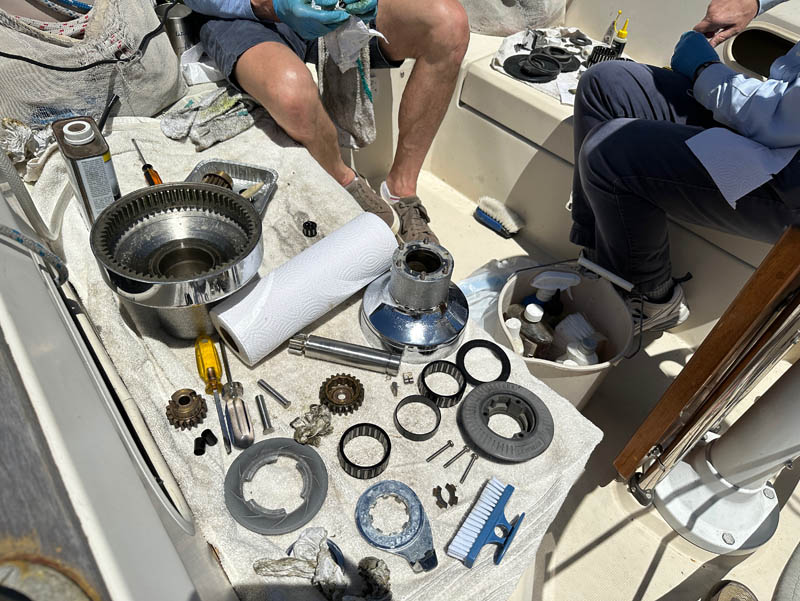
We disassembled the port-side primary and secondary winches first. It was again important to keep the parts for each clearly separated. Mixing them up can add many frustrating hours to putting the jigsaw puzzle back together again, though having the starboard-side winches assembled as a handy reference was reassuring.

Some of the teeth and other elements were pretty gummy with grease that had to be scraped out with a screwdriver before the acetone could do its work. Eventually the scraping and acetone had them glistening before we reapplied fresh, clean grease.
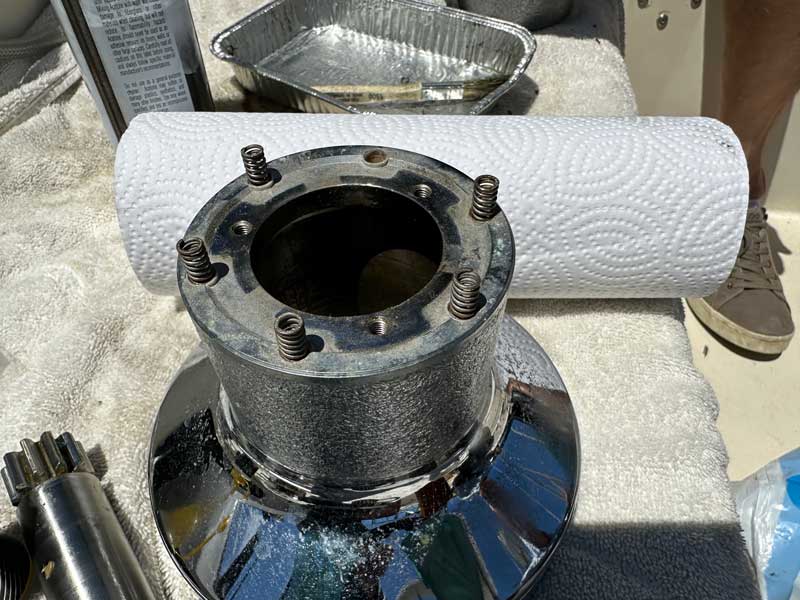
We did get them all put back together with very few extra parts left over. Oddly, the two-speed winches are single-speed, and port and starboard don’t match. Actually, it all came out perfectly. It was awesome to have knowledgeable, helpful crew to take on this task, and reassuring to see the winches in good shape and cleaned up for another 10 years! Just kidding. We’ll do them again in a couple of years. How often do you clean yours?
We know none of this will help the skipper’s starting abilities, but it should ease the crew’s pain when we’re again tacking for clear air.

That brought back memories of my days at Barient!
The most important safety issue is to make sure the pawl pockets are clean AND THAT THEY HAVE NOT ELONGATED (not typically a problem with bronze or SS winch drums, but is very common on single speed aluminum winches with pawls in the drum).
On heavily loaded winches the bronze gears can also elongate so they need to be checked to make sure the pawls are not to loose. If this is the case, the most economical fix is to drill out the pocket and press in another and to press in a newly machined pawl pocket.
If you replace any pawls (not typically needed) make sure that you have the right size pawl as not all are the same size.
If a pawl cannot hold the load because the pocket is too big or because the pawl will not engage, the winch can spin backwards and the winch handle is in the winch, it can do major damage.
As you mentioned, it is critical to have the pawl pockets clean and on lightly oiled…grease carries too much crud and can prevent the pawls from springing back into action.
When initially removing the winch drum there’s a good chance of losing parts, especially the caged roller bearings. A good trick is to cut a round hole the size of the winch base in the bottom of a cardboard box and fit it over the winch before starting disassembly. Select a box that is taller than the winch and provides some space to work. The box also helps to keep the adjacent area clean.